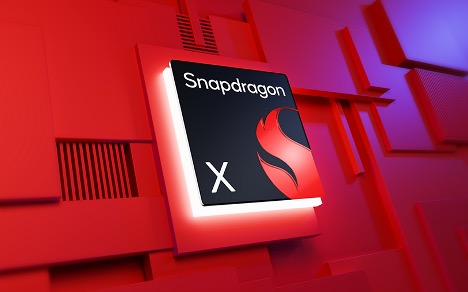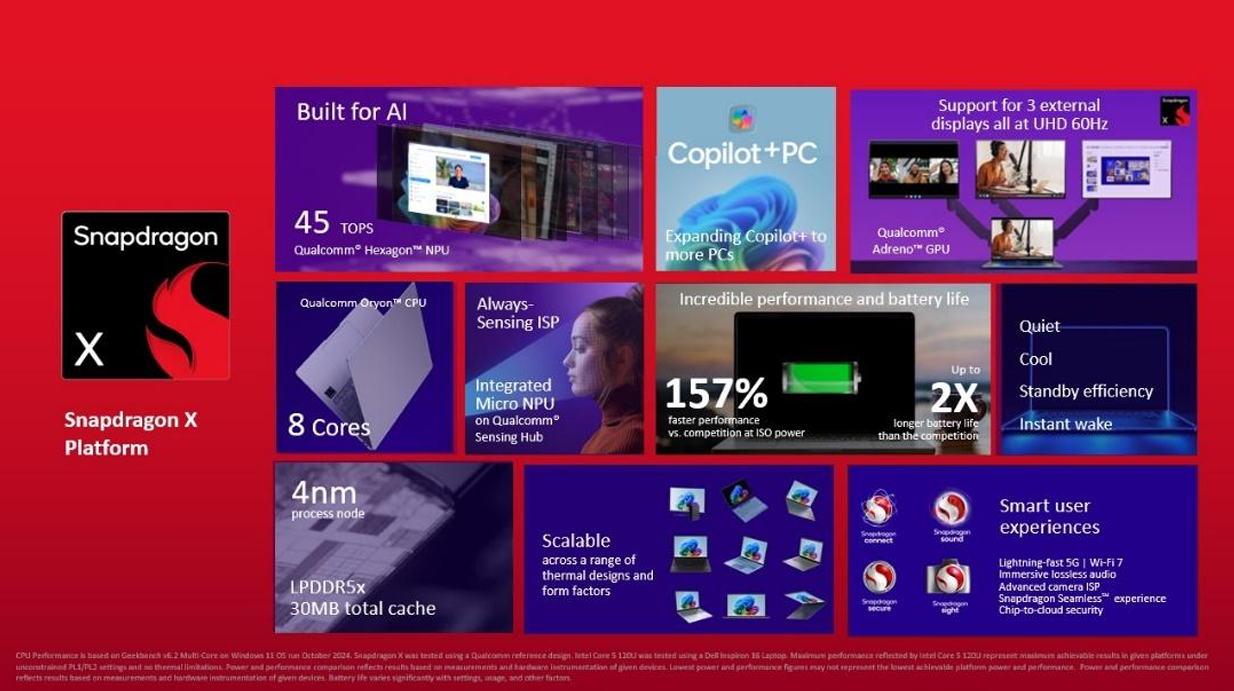Qualcomm’s Snapdragon X platform brings AI PC capabilities to more affordable devices, with Copilot+ laptops entering the $600 price range. With over 60 designs in progress and more than 100 expected by 2026 from OEMs like Asus, Acer, Dell, HP, and Lenovo, Snapdragon X aims to push AI-powered Windows PCs further into the mainstream. Qualcomm has also announced the world’s first Snapdragon-powered mini desktop PC, marking an expansion into compact computing.
What do we think? Midway through last year, we were told that AI PCs were high-end products aimed at premium users. But we were also told that by year-end, AI PC would move into the mainstream. The latest Snapdragon X news aligns with that timeline, bringing Copilot+ experiences to sub-$600 price points.
Snapdragon X is Qualcomm’s most significant push so far into mainstream AI computing. With lower price points and broader device availability, Qualcomm is addressing a market that x86 architectures have long dominated. However, sales numbers remain modest with low single-digit market share to date, and adoption at scale is far from guaranteed whatever price points can be hit.
We think Snapdragon X has the technical credentials to compete, but that is a red herring: the real questions are whether these AI capabilities will resonate with mainstream buyers—and whether OEMs will fully commit to pushing Snapdragon-powered devices alongside their traditional x86 offerings. Intel’s struggles at the corporate level don’t seem to be impacting their lead at the consumer level.
Snapdragon X series delivers new platform, mini desktop form factors, NPU-powered AI experiences
The fourth platform to join the Qualcomm Snapdragon X series, Snapdragon X introduces an eight-core Qualcomm Oryon CPU and an integrated Adreno GPU optimized for power efficiency and sustained performance. A key differentiator is the inclusion of a 45 TOPS neural processing unit (NPU), which puts the series over the 40-plus TOPS requirement for Microsoft’s Copilot+ AI. Qualcomm says the platform is designed to deliver both performance and multi-day battery life, positioning it as a viable choice for students, freelance workers, and cost-conscious consumers. Such exciting segments!

Major OEMs, including Acer, Asus, Dell, HP, and Lenovo, are expected to release Snapdragon X-powered devices in early 2025, and more will follow as we head toward 2026. These laptops will balance affordability with AI capabilities, reflecting Qualcomm’s strategy to broaden adoption of AI PCs beyond premium segments.
Snapdragon X will also power the world’s first Snapdragon-based mini desktop PC. While full details are pending, the move indicates a modest ambition to establish a presence in compact desktop form factors—an area traditionally dominated by x86 processors. Frankly, we suspect this is a cosmetic job and the real focus will be the laptop.
Qualcomm says there is an integrated power-efficient GPU (Adreno X1, aka Adreno 741), which supports “dynamic graphics ideal for creating presentations, Web browsing, or streaming content.” So, not gaming.

Windows 11 on Snapdragon continues to grow its ecosystem, now supporting more than 50 AI-powered native experiences, including VPNs, security applications, and music production tools. The launch of Moises, an AI music tool exclusive to Snapdragon-powered NPUs, highlights growing developer engagement with Qualcomm’s hardware.
Alex Katouzian, group general manager of mobile, compute, and XR (MCX) at Qualcomm, said, “Our ecosystem of partners continues to build on Snapdragon to deliver innovative form factors and premium AI experiences that enable everyday PC users who want a laptop that can keep up with their busy lives.”
Qualcomm will be hoping that those everyday PC users can get their heads around switching to Arm-based devices.
Additional coverage of Qualcomm’s AI-accelerated Snapdragon X process can be found here, here, and here.
LIKE WHAT YOU’RE READING? INTRODUCE US TO YOUR FRIENDS AND COLLEAGUES.